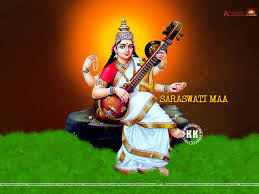Veadantasara : 18.
171. When the teacher in this way clears the meaning of the words “That” and “Thou” by the removal of superimpositions, and makes the qualified student grasp the import of the sentence, “Thou art That”, which is Absolute Unity, there arises in his mind a state of Absolute Oneness in which he feels that he is Brahman, by nature eternal, pure, self-illumined, free, real, supremely blissful, infinite and one without a second.
172. That mental state, illumined by the reflection of Pure Consciousness, objectifies the Supreme Brahman, unknown but identical with the individual self and destroys the ignorance pertaining to Brahman. Then just as a cloth is burnt when the threads composing it are burnt, so all the effects of ignorance are destroyed when their cause, viz., ignorance, is destroyed. Hence the mental state of Absolute Oneness, which forms part of those effects, is also destroyed.
173. As the light of a lamp cannot illumine the lustre of the sun but is overpowered by it, so Consciousness reflected in that state of the mind is unable to illumine the Supreme Brahman, self-effulgent and identical with the individual self, and is overpowered by it. And on the destruction of this state of Absolute Oneness with which that Consciousness is associated there remains only the Supreme Brahman, identical with the individual self, just as the image of a face in a looking-glass is resolved into the face itself when the looking-glass is removed.
174. Such being the case, there is no contradiction between the following Sruti passages: “By the mind alone It is to be perceived” (Br. Up. IV-4-19), and “That which cannot be thought of by the mind” (Kena Up. I-5). We are to suppose that the unknown Brahman is brought into contact with only the mental state, but not with the underlying Consciousness.
175. Thus it has been said: “The authors of the scriptures have refuted the idea that the individual Consciousness can manifest the Brahman. But they admit that the Brahman associated with ignorance is brought into contact with the mental states only for the purpose of dispelling ignorance regarding It” (Panchadasi VI-90).
176. And: “Brahman, being self-luminous, does not depend on the individual Consciousness for Its illumination” Panchadasi VI-92).
177. But there is a difference when the mental state assumes the form of material objects.
178. Because, in the case of the experience, “This is a jar”, the mental state assumes the form of the jar, makes the unknown jar its object and dispels the ignorance regarding it. Then the Consciousness underlying the mental state manifests the material jar.
179. Thus it has been said: “Both the intellect and the Consciousness underlying it come into contact with the jar. The intellect destroys the ignorance (regarding the jar) and the underlying Consciousness manifests the jar” (Panchadasi VII-91).
180. Just as the light of a lamp coming into contact with a jar or cloth existing in darkness, dispels the darkness which envelops them and through its own lustre manifests them as well.
Continues...




Comments